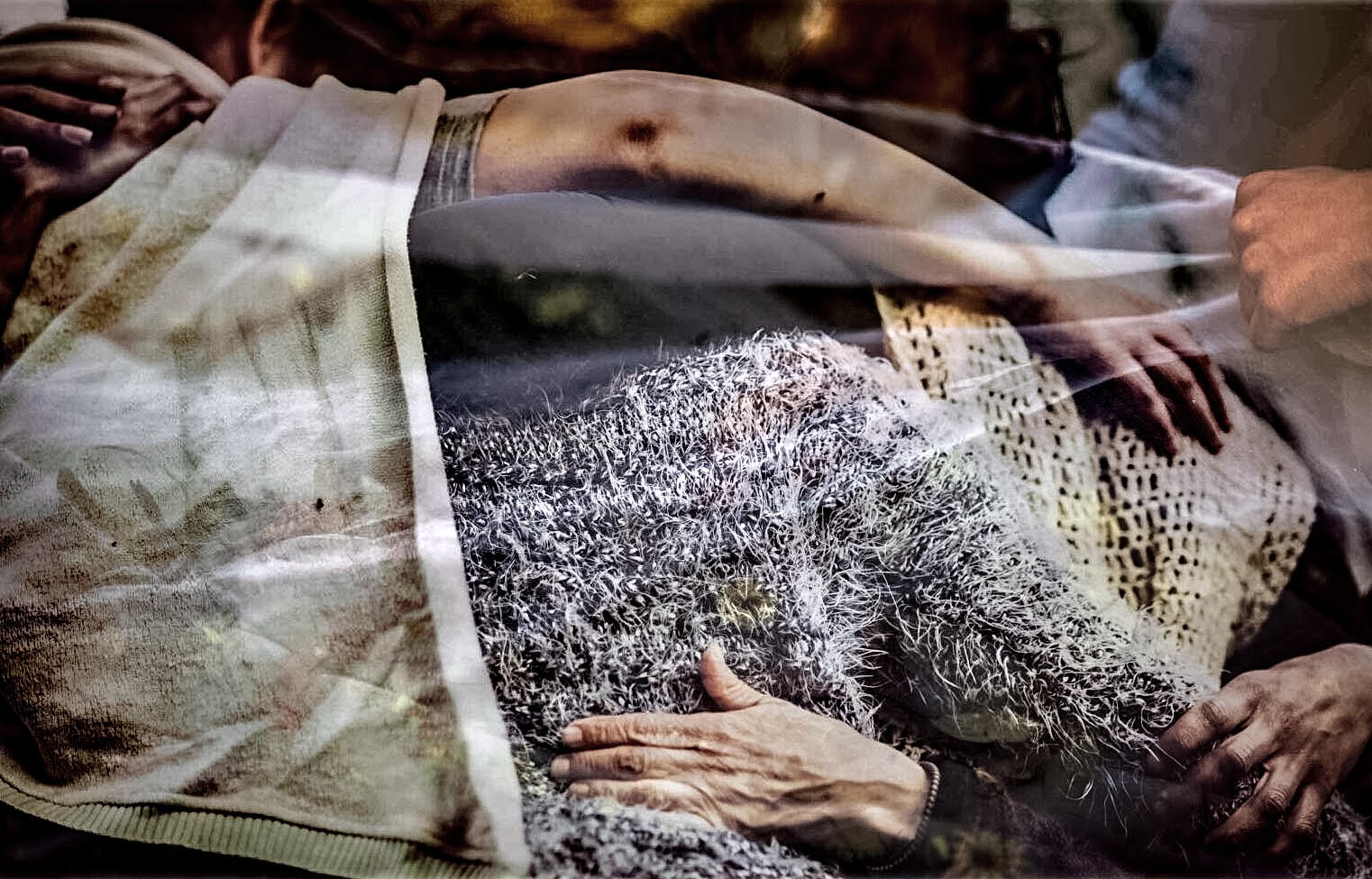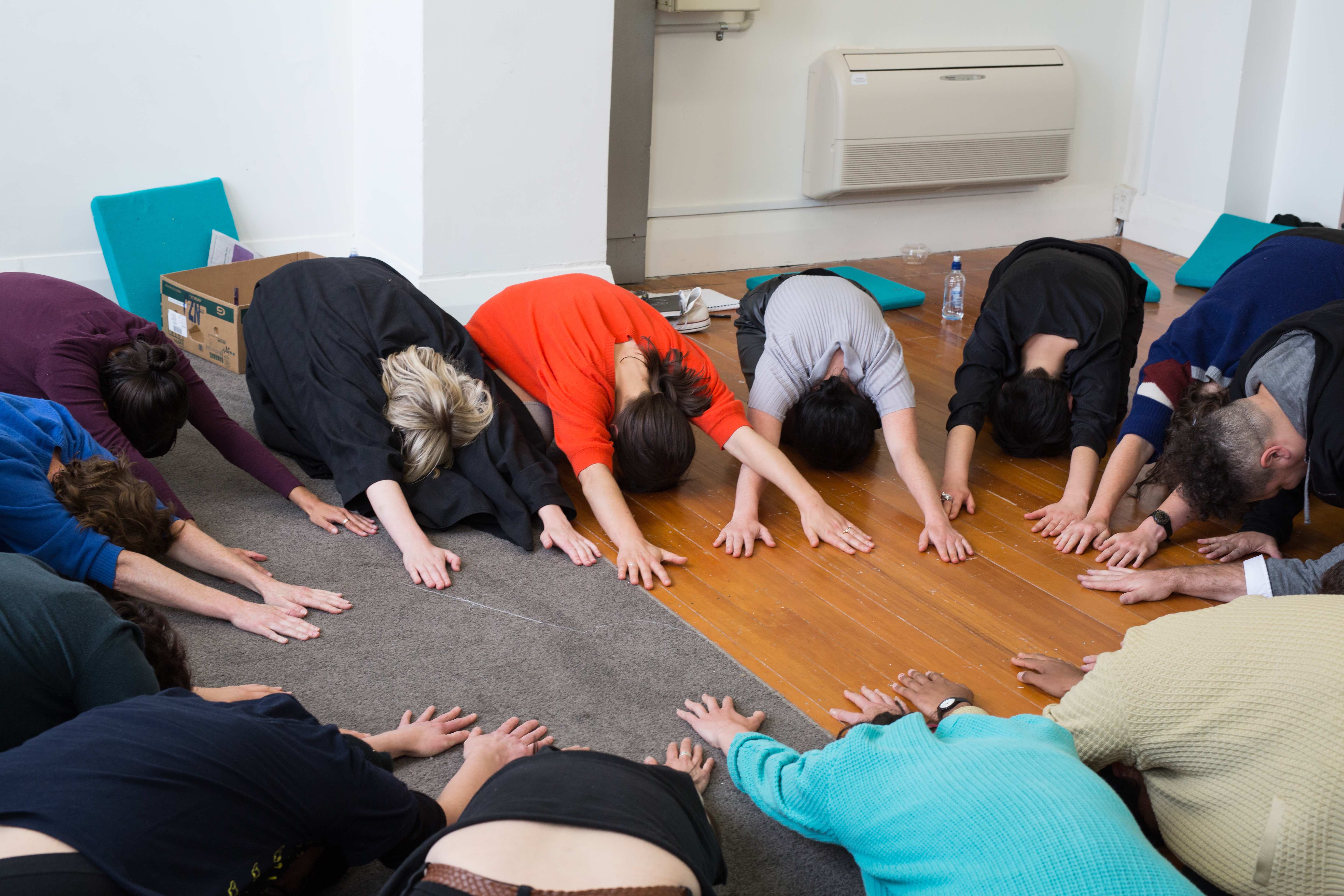
Fayen d’Evie and Katie West, Gathering Cecilia Vicuña’s 3 Frogs, 2016. Courtesy of the artists.
Between February and December 2016, four members of the Emerging Curators Programme—Fayen d’Evie, Bridget Riggir-Cuddy, Bridget Reweti and I—undertook an idiosyncratic and collaborative inquiry into ‘conversational research’ as a means to reframe the curatorial process to have human relations—people—at its centre. This research is ongoing, but some of the outcomes that have emerged from our relationships include: a series of workshops at The Physics Room in early November 2016 titled Reflections and Directions; a publication by Emily Rākete (Ngāpuhi, Te Rarawa, Ngāti Hine); a podcast between Salote Tawale and Bridget Reweti; an interview between Matt Pine and Taarati Taiaroa; and a retreat that brought together artists Katie West, Cecilia Vicuña and Tamsen Hopkinson, and resulted in an exhibition at Kadist (San Francisco).
‘Conversational research’ is a process we collectively agreed to pursue over the year. It was a term we devised to encapsulate our varied interests, values and collective politics. Below I have outlined a series of principles that the group considered over the span of the year as a means to sketch what ‘conversational research’ is or at least could be. These principles are not definitive and are drawn from a reflection on and analysis of our conversational research praxis to date.
Principles for Conversational Research:
● To practice conversational research is to challenge oneself through an engagement with others.
● Conversational research is a process that places emphasis on engaging in an on-going and potentially immeasurable relational commitment. It requires a commitment to the facilitation and maintenance of kinship—human relations.1
● Conversational research does not have a deadline, although it can have breaks.
● Geared towards a deceleration of outcomes, conversational research is a conscious decision to engage dialogically as a means to facilitate the emergence of knowledge, as opposed to focusing on the production of a predetermined outcome.
● Conversational research can be haptic and/or silent.
● Conversational research aims to slow down processes in order not to prejudge the outcomes of conversations, or even pre-empt them, but to be open to the emergence of gesture and/or collaboration.
● Conversational research is collaborative, informal and flexible.2
● Conversational research is a process that embraces contingency and uncertainty, aiming not to be limited by preconceived expectations or measures of success.
● In the context of conversational research it is the duty of the curator to support the artist’s ideas, be informed about their complexities and attempt to construct a safe framework for the artist to produce their work or express themselves.
● In the context of conversational research it is not the role of the curator to ask the artist to change their work towards a desired outcome.
● Conversational research requires benevolence and kindness; however, it is not altruistic. Self-care is important.
● All active participants in the conversation have the ability to voice their opinion and exercise the ‘Law of Two Feet’:3 to move to a space in which they feel they can contribute or learn, or to walk away from the conversation when it feels inappropriate or unsafe.
● With permission from the collaborators the conversation can be opened up for advice and appropriate council, which has the potential to provide collective permission or possible embargo.
● Conversational research can result in slippery authorship.
● Conversational research resists the assumption that there is a designated ‘public’ or that conversational research needs to be broadcast to be valid as an outcome.
● Conversational research accepts the need for public accountability and the need to support and encourage critical dialogue.
● Throughout the conversational research process it is important that collaborators are exhibitors (that they are represented on their own terms) as opposed to exhibits of a curatorial process.
● The question of how, what and to whom a conversation is made public is something to be determined in conversation with collaborators and must emerge through the process itself.

Reflections and Directions, The Physics Room, Christchurch, 12 November 2016. Courtesy of The Physics Room.